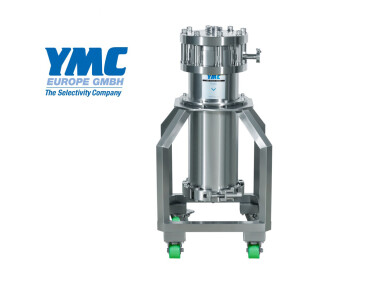Columns (LC)
What is Peak Fronting?
Aug 28 2014
The aim in high performance liquid chromatography (HPLC) and gas chromatography (GC) is to get good peak shape and good separation. The most desirable outcome is the generation of symmetric peaks.
Peak fronting is the name given to asymmetric peaks having a wider front half of the peak compared to the back half.
Quantitative peaks
A quantitative peak description imagines a peak divided vertically into two halves, from the apex of the peak, vertically down to the baseline. A measurement from the left hand edge of the peak to the ‘centreline’ is termed ‘a’ and measurement of the other half of the peak ‘b’.
To describe a peak, the pharmaceutical industry uses a quantity termed Tf, the tailing factor, which measures the peak height at 5% of the maximum height. Then:
Tf = (a+b) / (2a)
Acceptable peaks have values 0.9 < Tf < 1.2. A peak has unacceptable peak fronting if the tailing factor is less than 0.9.
Other industries use a similar quantitative measure known as the asymmetric factor, AS.
Column Overload
Peaks fronting occurs when the sample capacity of the analytical column is exceeded, which can happen in both GC and HPLC experiments. This overloading effect results from poor sample solubility in the stationary phase, the injection of too much sample, or operating at a “k” value (capacity factor) that is too low. In GC separations, this can lead to anti-Langmuir behaviour — with the distribution of the solute being non-idealized between the mobile and stationary phases — and leads to peak fronting. Using a “k” value between 3 and 5 will ensure a good peak shape, as well as ensuring that the sample partitions in the stationary phase long enough to achieve separation.
At a fixed temperature, any given solute will have a maximum vapour pressure specific to that temperature. The solute can evaporate if the vapour pressure of the solute is below the maximum. If a large sample volume is injected, the maximum vapour pressure may be reached when no more solute can evaporate. The solute that cannot evaporate remains in the stationary phase until the vapour pressure drops. It appears that the stationary phase is overloaded compared to the mobile phase. As the sample doesn’t travel through the column in a tight band, the peak is broadened and increased separation times lead to peak fronting.
There are two simple methods to fix this problem:
- Reduce the solute concentration in the sample
- Reduce the injection volume of the sample
How to avoid the overloading of columns is discussed in the article: Optimisation of Column Parameters in GC.
Channelling
Another cause of peak fronting is channelling in a packed column. In this case, a narrow channel forms in the stationary phase, sometimes as a result of air bubbles being pushed through. The channels allow some of the solute molecules to get in front of the main body of solute. They can elute slightly in front of the main peak, leading to peak fronting.
Using end caps during column storage and degassing of the mobile phase can help prevent channel formation.
Events
May 18 2025 Tempe. AZ, USA
May 21 2025 Birmingham, UK
Jun 01 2025 Baltimore, MD, USA
Jun 15 2025 Bruges, Belgium
Jul 14 2025 Kuala Lumpur, Malaylsia














